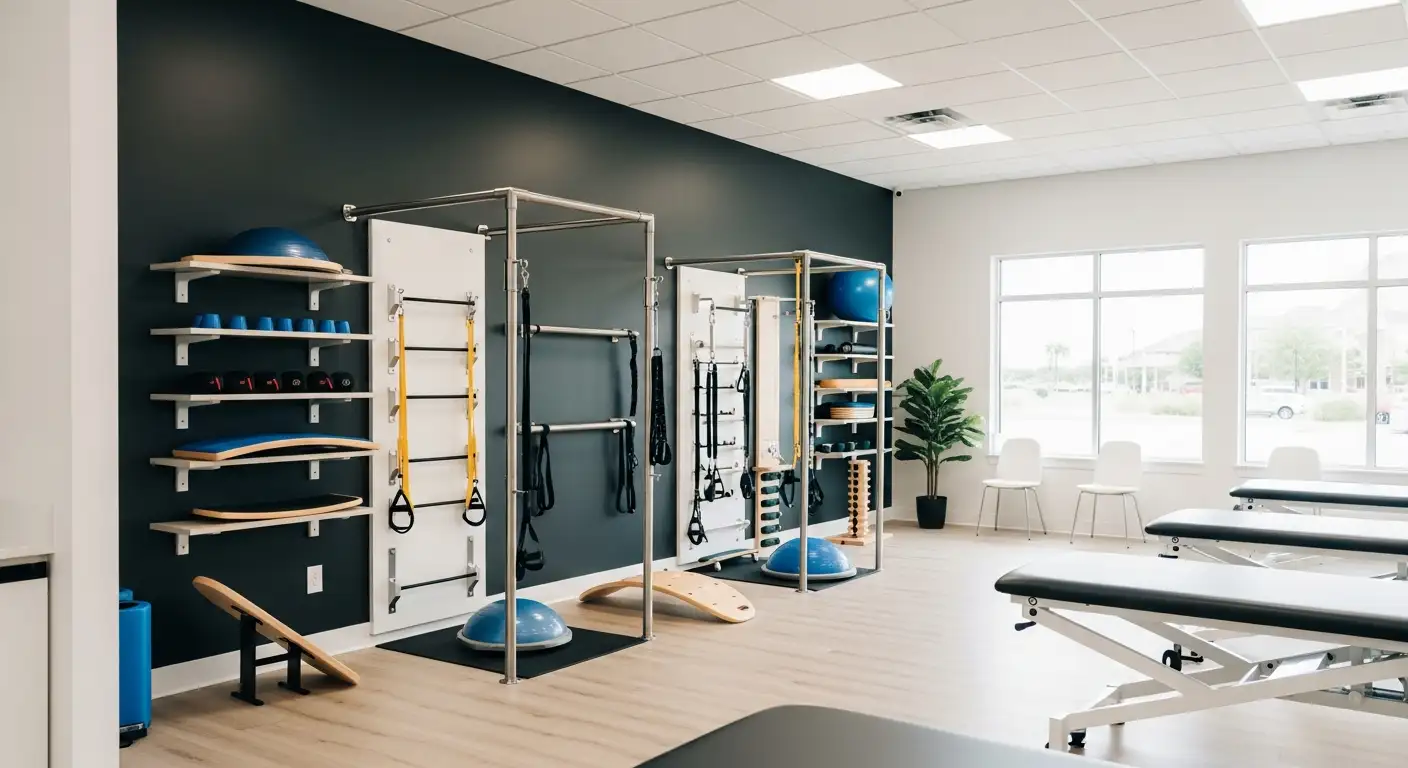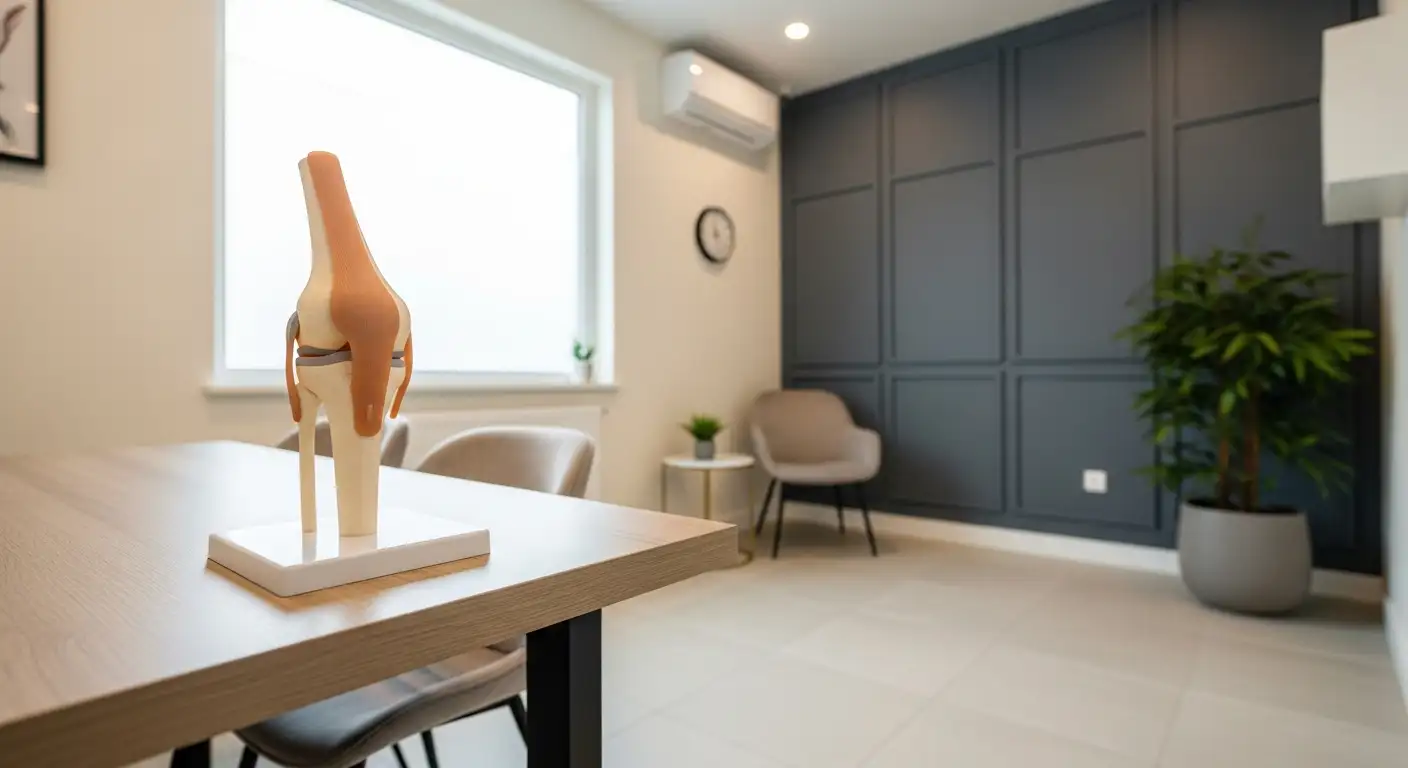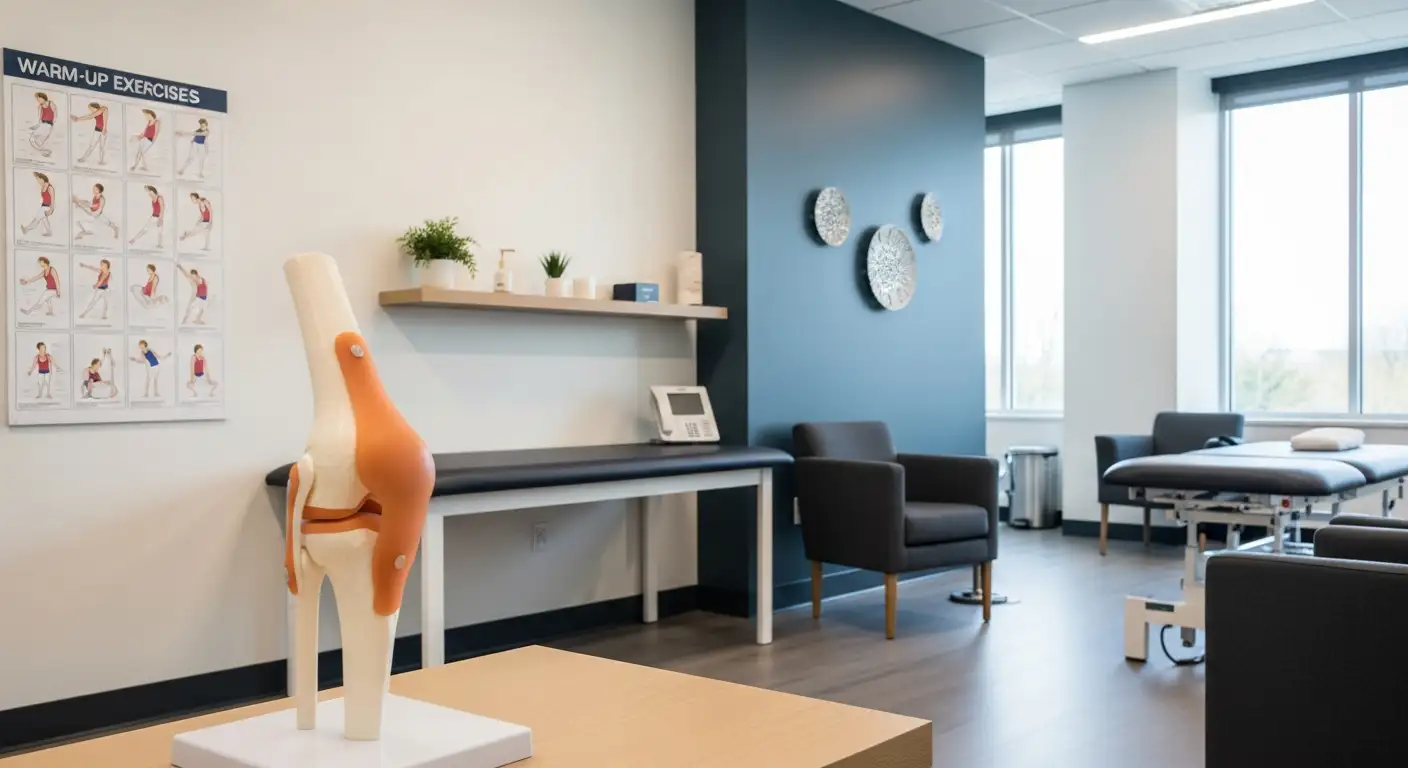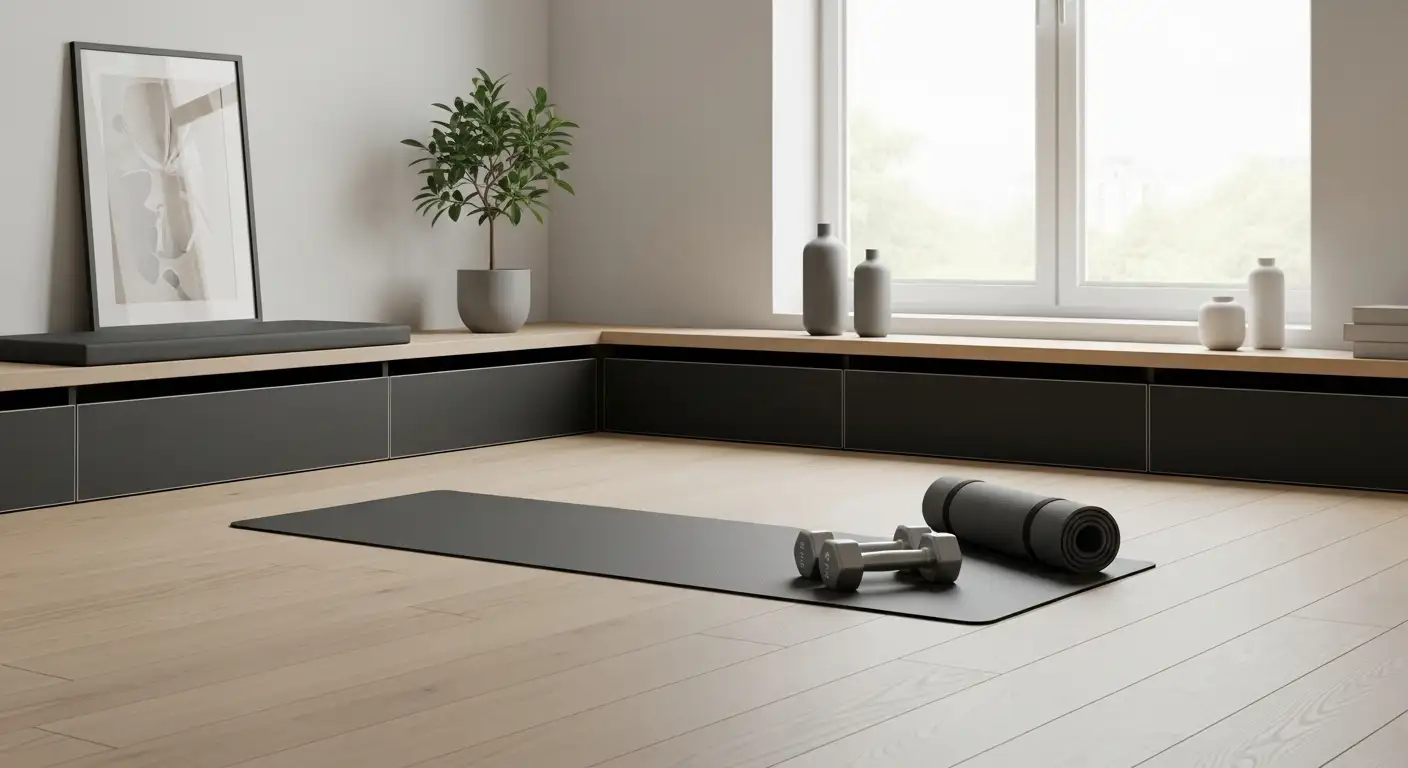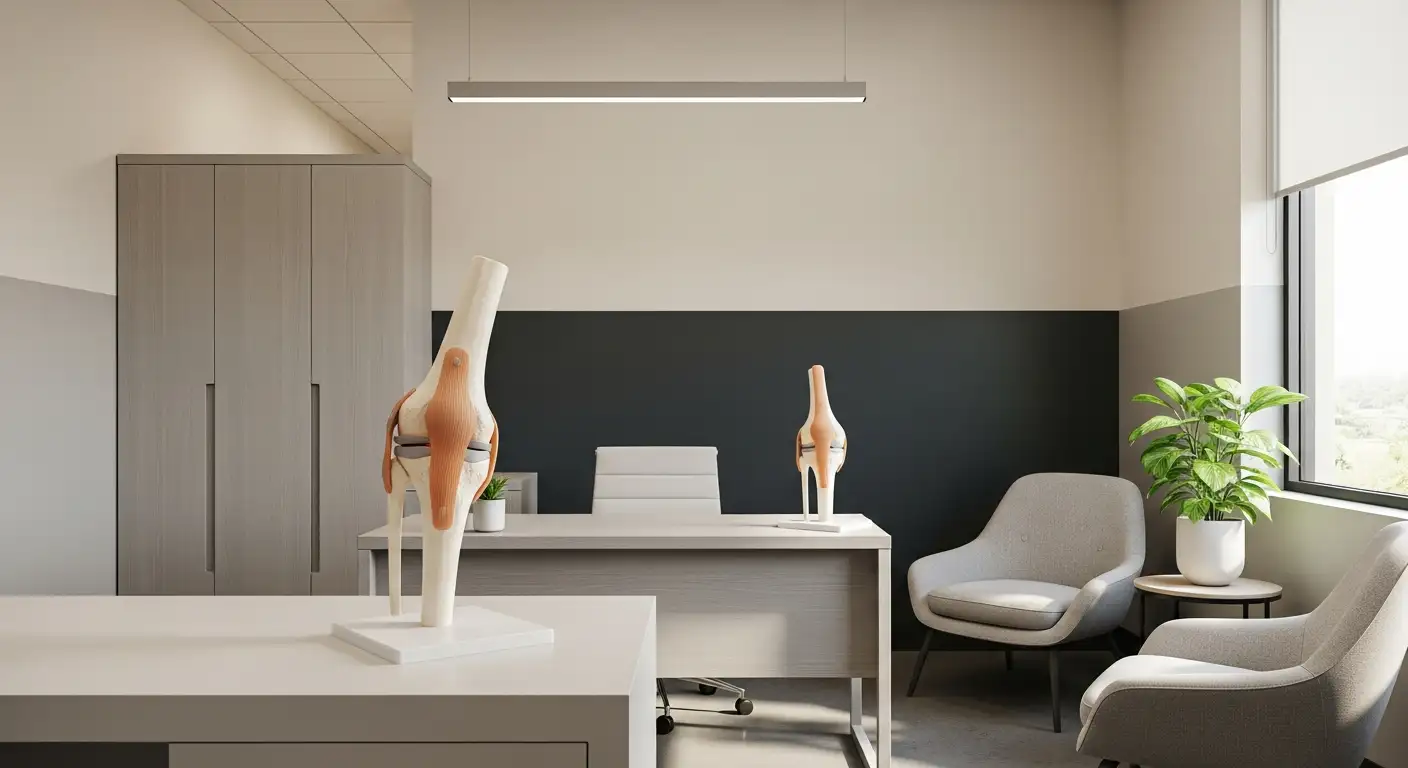Understanding Knee Pain During Squats
A common issue encountered when performing squats is knee pain. This discomfort can be caused by a variety of factors and may indicate underlying conditions. To effectively treat knee pain during squats, it is essential to understand its causes and the common knee conditions associated with squatting.
Causes of Knee Pain in Squats
Several factors can contribute to knee pain when squatting. Poor squatting form is a common cause, which includes overextension of the knees past the toes, incorrect alignment of the knees with the toes, and improper back posture.
Additionally, muscle imbalances such as weak glutes or tight hip flexors can aggravate knee pain during squats [2]. Addressing these imbalances through targeted exercises can help reduce discomfort.

A poor stance can also strain the knee joint. If the hips, knees, or ankles are in the wrong position during a deep squat, this pressure can cause repetitive friction between the patella and femur, leading to pain.
Common Knee Conditions in Squatting
Several knee conditions can lead to pain when squatting:
- Runner's knee: Also known as Patellofemoral Syndrome, this involves misalignment and movement issues associated with the kneecap. It can lead to redness, tenderness, and a clicking sensation in the knee during squats.
- Jumper's knee: Also known as Patellar Tendonitis, this condition involves inflammation and tears in the patellar tendon, which can cause pain during squats. These tears are often a result of activities like jumping and kicking.
- Osteoarthritis: This condition is characterized by the wearing off of cartilage cushioning the bones, leading to inflammation, stiffness, and pain. The compression of cartilage during squats can increase friction between bones, causing knee pain, especially in older individuals [3].
- Iliotibial Band Syndrome (ITBS): This condition causes pain and friction on the outer side of the knee during squats. The tightening of the band running from the outer thigh to the kneecap can lead to misalignment, pain, and inflammation [3].
Understanding the cause of knee pain when squatting is the first step towards effective treatment. This knowledge enables targeted interventions to alleviate pain and allows individuals to continue with their workout routines comfortably.
Non-Exercise Treatments for Knee Pain
Those suffering from knee pain while squatting need not fret, as there are several non-exercise treatment options available. These methods primarily focus on reducing pain and inflammation in the knee and include tactics such as the RICE method and various medications.
The RICE Method
The RICE method is a simple, at-home treatment that stands for Rest, Ice, Compression, and Elevation. This method is often recommended for knee pain treatment as it helps alleviate inflammation and pain [3].
- Rest involves limiting movement and weight-bearing activities to protect the knee from further injury.
- Ice is applied to the knee to reduce swelling and numb the area, thus relieving pain.
- Compression refers to wrapping the affected knee with a bandage or wearing a knee brace to provide support and limit swelling.
- Elevation involves raising the affected leg above the level of the heart to reduce swelling and improve circulation.
The RICE method is typically the first line of treatment for knee pain caused by minor injuries or strain from physical activities like squatting.
Medications and Knee Pain
In addition to the RICE method, certain medications can also help manage knee pain. This typically includes non-steroidal anti-inflammatory drugs (NSAIDs) like ibuprofen and naproxen which help relieve pain and reduce inflammation.
For persistent or severe knee pain, your healthcare provider may recommend stronger pain relievers or corticosteroid injections. These injections help to reduce inflammation and provide temporary relief from knee pain.
It's important to note that while these medications can provide temporary pain relief, they do not address the underlying cause of knee pain when squatting. Therefore, they are typically used in conjunction with other treatment methods such as physiotherapy and strengthening exercises to provide a comprehensive treatment approach for knee pain [3].
Before starting any new medication, it's always important to consult with a healthcare provider to discuss potential risks and benefits. They can provide personalized treatment recommendations based on your individual health needs and condition.
Exercise-Based Knee Pain Treatments
Exercise-based treatments play a crucial role in alleviating knee pain when squatting. These treatments typically focus on strengthening the muscles around the knee, maintaining joint flexibility, and physical therapy interventions.
Strengthening Exercises for Knee Support
Strengthening the muscles around the knee joint, including the quadriceps, hamstrings, and hip muscles, can help alleviate knee pain when squatting. The exercises like knee bends, thigh contractions, leg raises, and hamstring stretches can enhance muscle strength, flexibility, balance, and posture over time [3]. Here are some exercises to consider:
Flexibility and Mobility Workouts
In addition to strengthening exercises, maintaining flexibility and mobility in the knee joint is essential for preventing knee pain when squatting. Proper warm-up before squatting, including dynamic stretching exercises, can help reduce the risk of knee pain. This prepares the muscles and joints for the stress of squatting movements. Some recommended flexibility and mobility exercises are:
The Role of Physical Therapy
For chronic knee pain during squats, seeking guidance from a physical therapist or a healthcare provider is recommended to develop a tailored treatment plan. This plan may include targeted exercises, activity modifications, and other therapies.
Physical therapy exercises can help strengthen these muscles and reduce knee pain when squatting [2]. A physical therapist can provide a personalized workout routine that addresses individual needs and ensures exercises are performed correctly, minimizing the risk of further injury.
By incorporating these exercise-based treatments into your routine, you can work towards reducing knee pain and improving the overall health of your knees. Always remember to consult with a healthcare professional before starting any new exercise regimen.
Importance of Proper Squat Form
When it comes to knee pain when squatting treatment, correct squat form plays a significant role. Proper technique can help reduce stress on the knee joint and prevent pain.
Squatting Techniques for Knee Health
The first step towards achieving a pain-free squat is understanding and practicing the correct squatting technique. This involves keeping the back straight, ensuring the knees align with the toes, and not overextending the knees past the toes during the squat movement.
Another key aspect to consider is the direction of knee flexion. The treatment for knee pain often involves ensuring that knee flexion follows a straight line over the toes when performing the squat movement.
Other techniques for reducing the risk of knee pain include squatting with the hips and maintaining a neutral spine [2].
Moreover, a proper warm-up before squatting, including dynamic stretching exercises, can help prepare the muscles and joints for the stress of squatting movements and reduce the risk of knee pain.
Squat Depth and Knee Pain
The depth of your squat can also impact your knees. While deep squats can be beneficial for strengthening the lower body, they can also put additional stress on the knees, especially if performed incorrectly.
In some cases, modifications to squatting depth may be necessary to manage knee pain during squats. Partial squats, which involve lowering the body only halfway down, can be a safer alternative for individuals experiencing knee pain.
Supportive equipment, such as squat pads or knee wraps, can also be used to provide additional support and stability during squats.
In conclusion, practicing correct squat form and making necessary adjustments to squat depth can significantly help in the treatment of knee pain when squatting. It's always recommended to seek professional advice if knee pain persists despite these modifications.
Alternative Movements to Squats
Squats can be a challenging exercise for those experiencing knee pain. However, there are several alternative movements that can provide similar benefits without exacerbating knee discomfort. These exercises aim to strengthen key muscle groups involved in squatting movements, such as the glutes, hamstrings, and quadriceps. They can be an effective part of a comprehensive knee pain when squatting treatment plan.
Glute Bridges and Deadlifts
Glute bridges are effective alternatives that target the glutes, hamstrings, and core muscles without causing strain on the knees. They involve lying on the back with knees bent and feet flat on the floor, then lifting the hips toward the ceiling. This exercise can help alleviate knee pain by strengthening the surrounding muscles and improving stability [5].
Deadlifts can also be substituted for squats to work the posterior chain and improve overall strength without exacerbating knee issues. Proper form and technique are essential when performing deadlifts to prevent injury. By keeping the back straight and lifting primarily with the glutes and hamstrings, deadlifts can improve lower body strength and stability without aggravating knee pain.
Step-ups and Split Squats
Step-ups are a functional exercise that mimics the movement of climbing stairs and can help strengthen the quads, hamstrings, and glutes. Use a stable platform or bench to perform step-ups, making sure to maintain proper alignment throughout the exercise to avoid knee strain. Gradual progression is key with step-ups; start with a lower height and increase as strength and confidence improve [5].
Split squats and Bulgarian split squats are unilateral exercises that can help improve balance, stability, and strength in each leg separately. These exercises can be beneficial for individuals with knee pain as they allow for focus on one leg at a time, reducing strain on the knees. By working one leg at a time, split squats can help address imbalances that may contribute to knee pain during squats.
Together, these exercises can contribute to a balanced and effective knee pain when squatting treatment strategy. Strengthening the quadriceps and hamstrings, in particular, can help alleviate knee pain when squatting, as these muscles play a crucial role in knee stabilization during the movement.
Specialized Treatments for Knee Pain
For those experiencing knee pain while squatting, there are a variety of specialized treatments available that can offer relief and improve the strength and stability of the knee joint. These treatments include the use of an off-loading knee brace, isometric exercises combined with neuromuscular electrical stimulation (NMES), and blood flow restriction (BFR) training.

The Use of Off-loading Knee Brace
An off-loading knee brace is a type of brace that helps to stabilize the patella during movements that tend to make the knee joints unstable, such as squatting [7]. By providing additional support, it can help to reduce the strain on the knee and alleviate pain.
Additionally, a study cited in PubMed Central found that using an off-loading knee brace significantly decreased the activity of the vastus medialis oblique (VMO) muscle during squatting and fast walking exercises. By reducing the activity of this muscle, the brace can help to balance the forces acting on the knee and reduce pain and discomfort.
Isometric Exercises and NMES
Isometric exercises, such as the wall sit, have been found to be effective in decreasing knee pain during squats. These exercises involve contracting the muscles without any visible movement in the angle of the joint.
Neuromuscular electrical stimulation (NMES), when used in combination with traditional strengthening exercises, can improve quadriceps strength and reduce knee pain during squats. This treatment involves using small electrical currents to stimulate the muscles, helping to strengthen them and increase their resistance to pain.
The Role of Blood Flow Restriction
Blood flow restriction (BFR) training is another effective method for improving quadriceps strength and muscle size in individuals experiencing knee pain during squats [8]. This training method involves restricting the blood flow to the muscles during exercise, which can stimulate muscle growth and strength without the need for heavy weights.
BFR training can be particularly beneficial for individuals who find it painful to perform traditional strength training exercises due to their knee pain. It allows them to achieve similar benefits without placing excessive stress on the knee joint.
These specialized treatments for knee pain when squatting can be highly effective when incorporated into a comprehensive knee pain management plan. However, they should be performed under the guidance of a healthcare professional or physical therapist to ensure they are done safely and effectively.
References
[1]: https://www.healthline.com/health/knee-pain-when-squatting
[2]: https://www.medicalnewstoday.com/articles/325246
[3]: https://www.physiotattva.com/blog/what-causes-knee-pain-when-squatting
[5]: https://www.realsimple.com/health/fitness-exercise/squat-alternatives-for-knee-pain
[6]: https://www.hingehealth.com/resources/articles/knee-pain-when-squatting/
[7]: https://www.ncbi.nlm.nih.gov/pmc/articles/PMC3309369/
[8]: https://digitalcommons.odu.edu/cgi/viewcontent.cgi?article=1016&context=hms_etds
